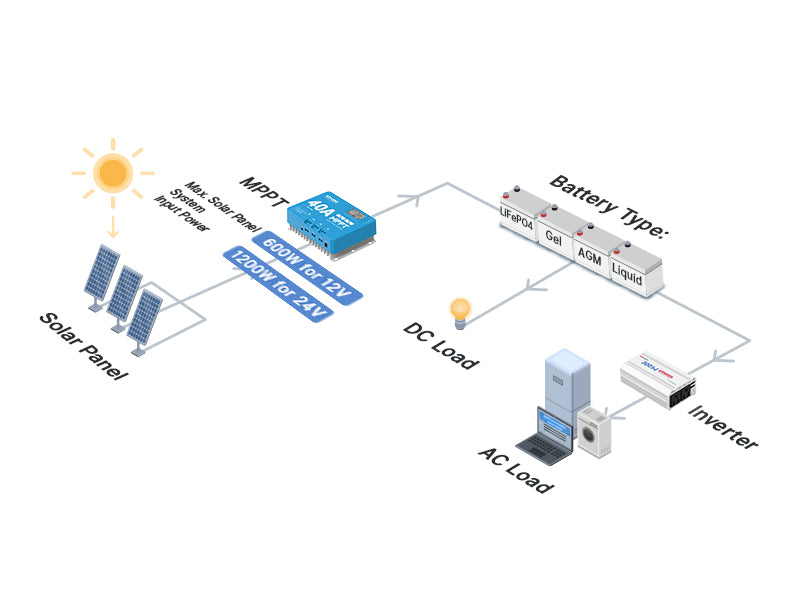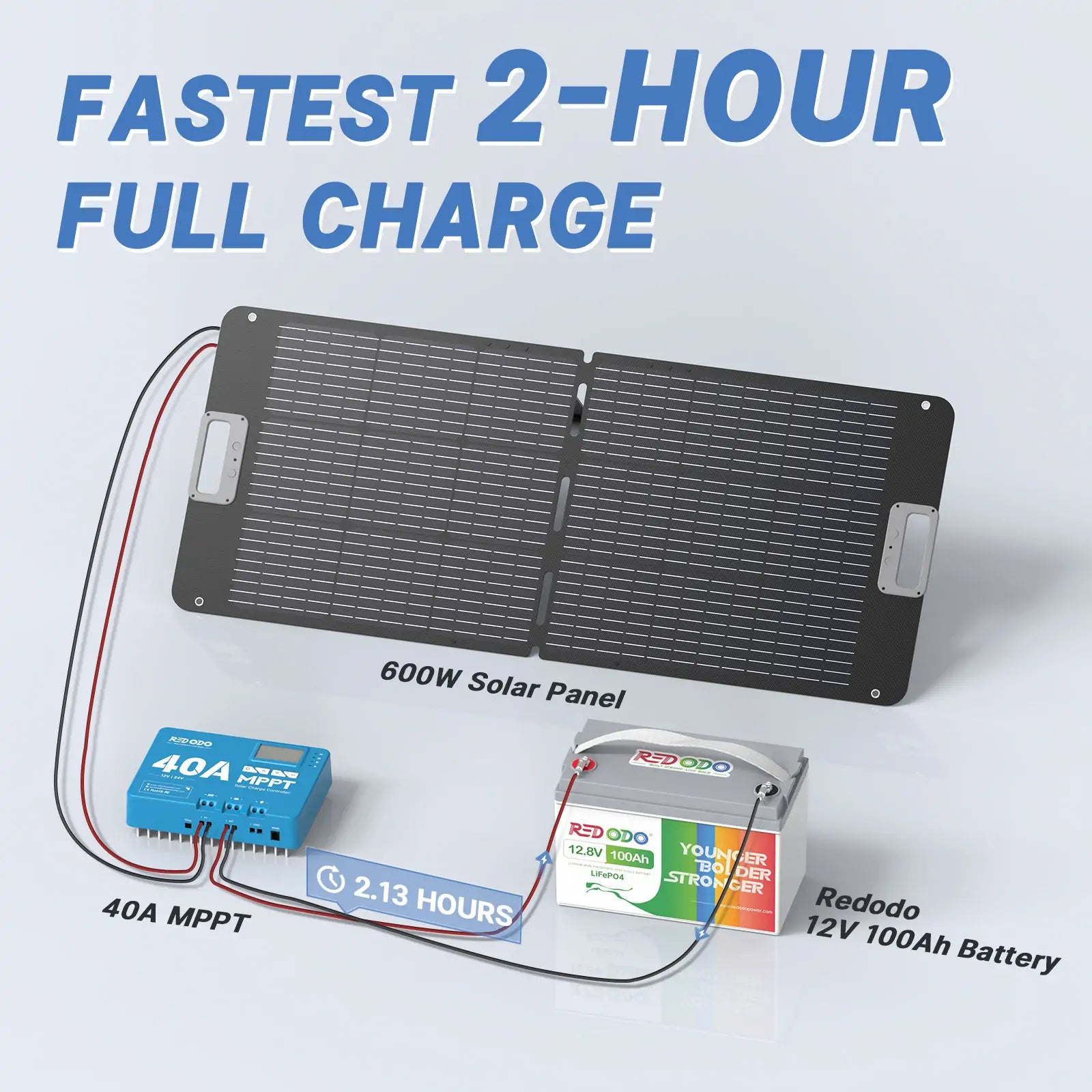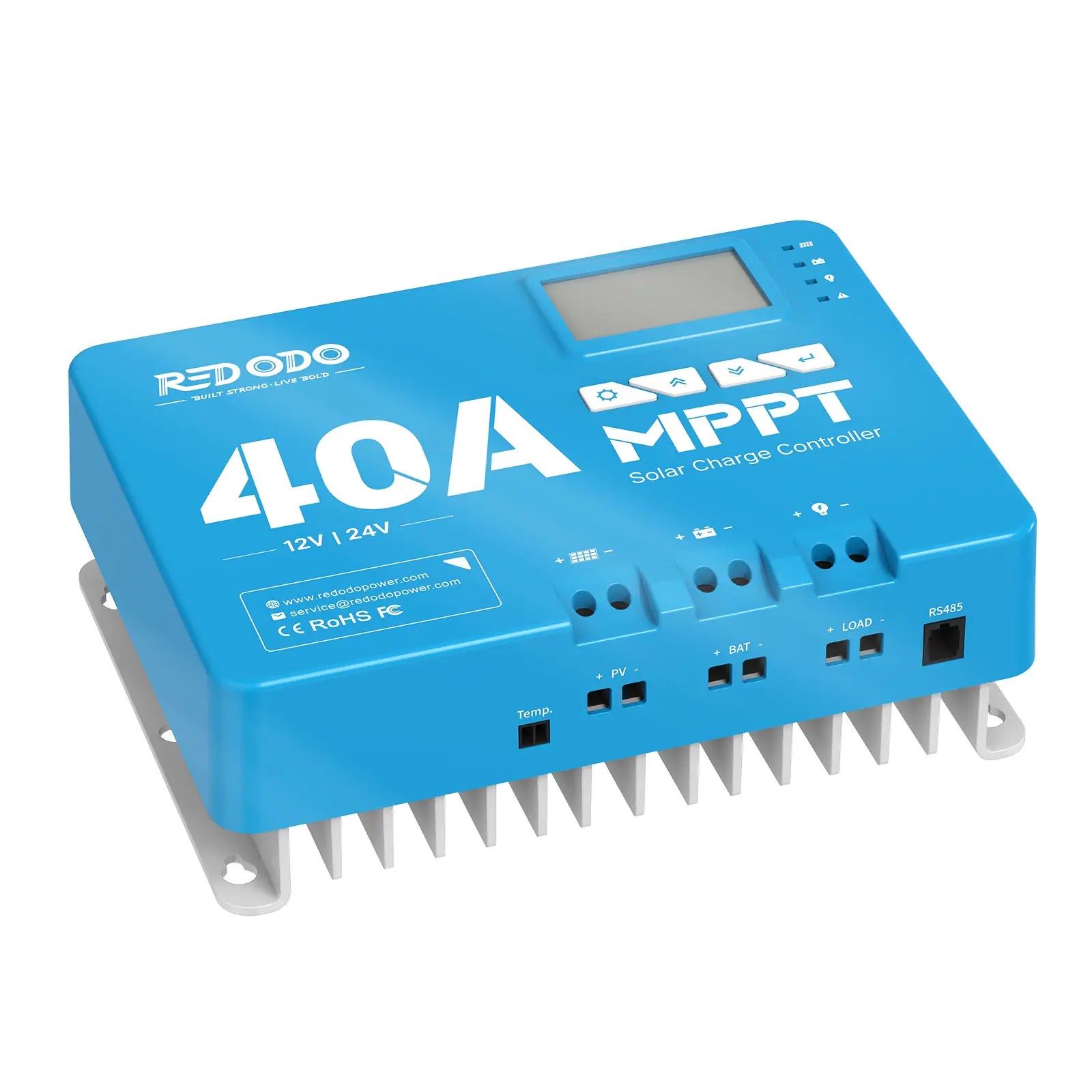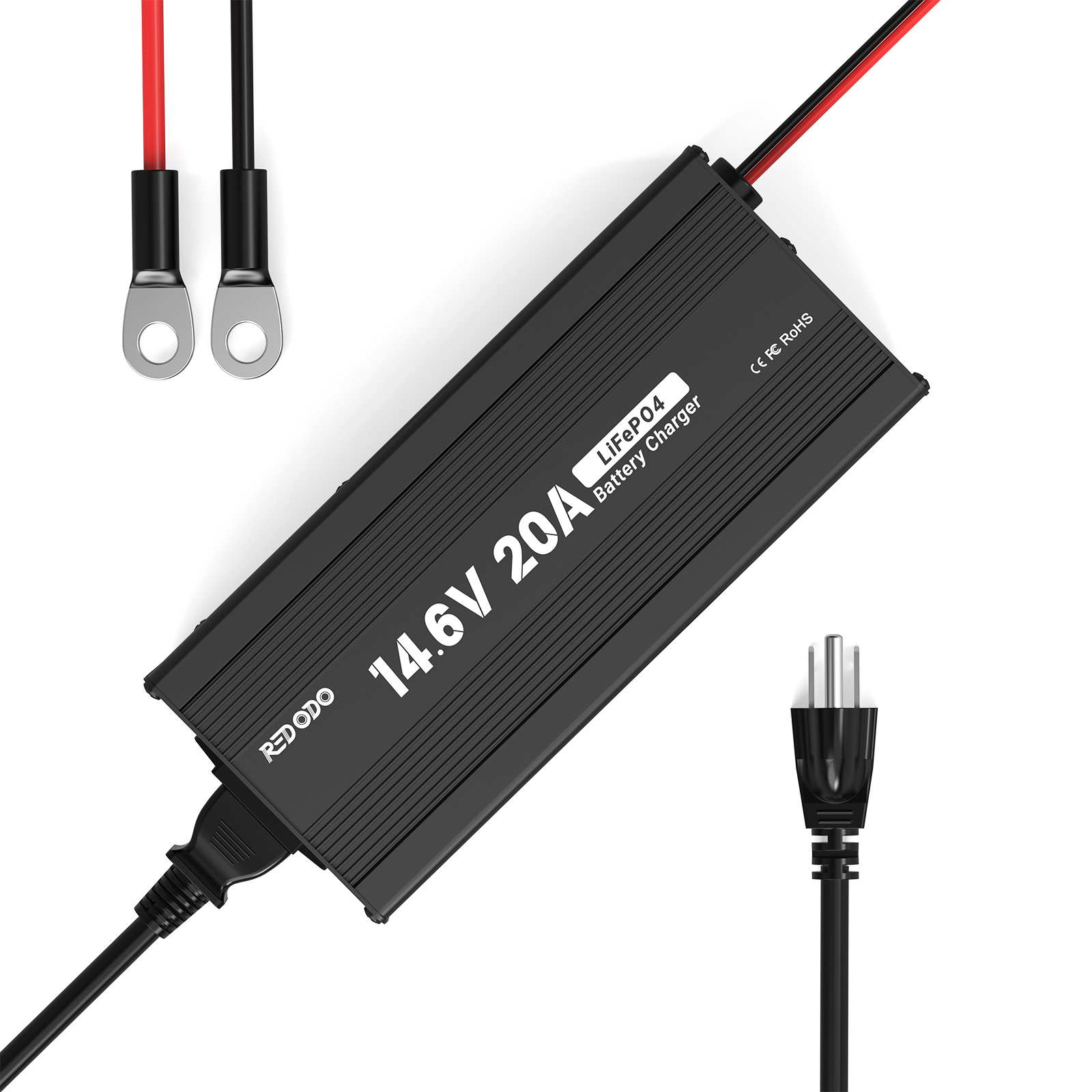How to Charge Marine Trolling Motor Battery With Solar Panel
Are you looking to harness the power of the sun to keep your marine battery charged and ready for action? With the increasing popularity of solar energy, many boat owners are turning to solar panels as a sustainable and efficient way to maintain their marine batteries. In this article, we will delve into the steps of charging trolling motor battery with solar panel and considerations for effectively charging.
The Basics to Charge with Solar Panel
Before we jump into the practical steps, let's first understand the basic components involved in charging a trolling motor battery with a solar panel. A typical setup includes a solar panel, a solar charge controller, and your marine battery for trolling motor. The solar panel harnesses sunlight and converts it into electrical energy, which is then regulated and directed to the marine battery by the charge controller.
Benefits of Solar-Powered Charging for Marine Batteries
Incorporating a solar panel to charge your marine battery offers numerous advantages. One of the most evident benefits is the eco-friendly nature of solar energy. By utilizing the sun's power, boat owners can significantly reduce their reliance on fossil fuels and decrease their carbon footprint.
Moreover, solar charging systems are known for their quiet operation and minimal maintenance requirements. Unlike traditional generators or shore power, solar panels produce no noise or emissions, providing a peaceful and environmentally friendly power solution for your boat.
Additionally, the ability to charge your marine battery using solar power means you are not tethered to shore power sources, offering greater freedom and flexibility in selecting your boating destinations. Whether it's a remote cove or a secluded marina, a solar-powered marine battery charging system ensures that you have a reliable power source wherever your adventures take you.
Related Reading: 6 Methods to Charge A Trolling Motor Battery on the Water

Optimal Solar Panel Sizing for Charging Trolling Motor Batteries
When determining the ideal solar panel size for trolling motor battery charging, several crucial factors demand consideration. These include the dimensions of your boat, the capacity of the battery, and the magnitude of power necessary to sustain your energy requirements.
In practical terms, the suitable solar panel size for marine battery charging pivots on both the energy demand and the available sunlight. For the majority of boats, a single 100-watt solar panel is usually adequate for upholding the charge of a marine battery over a brief period. However, for larger vessels or those demanding higher power output, installing multiple panels or larger units might be necessary.
Moreover, when choosing a solar panel for charging trolling motor batteries, it is essential to factor in the prevailing weather conditions during your voyages. If you anticipate sailing in overcast or cloudy weather, a larger solar panel may be necessary to compensate for diminished sunlight. Conversely, if you expect predominantly sunny conditions, a smaller panel might suffice to fulfill your energy needs.
Additionally, the quality of the solar panel is of utmost importance. The efficacy of a solar panel dictates the amount of power it can generate from the available sunlight. Panels with higher efficiency ratings can yield more power with fewer units, a crucial consideration for marine applications where space is often limited. Choosing a high-quality panel can significantly impact the overall effectiveness and output of the solar charging system for your marine trolling motor battery.
Essential Components for Solar Charging of a Trolling Motor Battery
To effectively charge a trolling motor battery using a solar panel, you will require the following components:
Solar panel: Select a solar panel that aligns with the size and capacity needs of your battery. Consider factors such as the battery's charging requirements and the available space on your boat when choosing the appropriate solar panel.
Solar Charge controller: An essential component, the solar charge controller regulates the charging process, preventing overcharging, which could harm the battery, and ensures the battery receives the optimal amount of charge. Additionally, the charge controller protects the battery from excessive discharge, thereby prolonging its lifespan.
Cables and connectors: High-quality cables and connectors are vital for establishing reliable connections between the solar panel, charge controller, and the battery. These components facilitate efficient power transfer and minimize energy losses.
Mounting hardware: To securely install the solar panel on your boat, you will need mounting hardware. This hardware ensures the proper positioning of the solar panel to maximize sunlight exposure and maintains stability, even during rough water conditions.
Optional: Integrating a battery monitor or energy meter into your system enables you to monitor the charging progress and track the battery's state of charge. This additional component furnishes valuable information to assist in optimizing power usage and ensuring the battery is adequately charged.
Connecting a Marine Solar Battery Charger to Your Boat: A Step-by-Step Guide
1. Choosing the Optimal Location for Your Solar Battery Charger
- Select a site on your boat that receives abundant sunlight throughout the day.
- Ensure the chosen area is free from any obstructions that may cast shade on the solar panel.
2. Cleaning Battery Terminals for Effective Charging
- Detach the marine battery from any power source or devices.
- Use a wire brush to clean the battery terminals, removing any corrosion or dirt.
3. Connecting Cables for Solar Battery Charging
- Link the positive terminal of the solar panel to the positive terminal of the charge controller using the appropriate cable and connector.
- Connect the negative terminal of the solar panel to the negative terminal of the charge controller.
- Attach the positive terminal of the charge controller to the positive terminal of the marine battery.
- Connect the negative terminal of the charge controller to the negative terminal of the marine battery.
4. Installing Charge Regulator for Marine Solar Charging
- Refer to the manufacturer's instructions to correctly install the charge regulator between the solar panel and the battery.
- Ensure accurate wiring and connections to the solar panel, charge controller, and battery.
5. Connecting Marine Solar Panel to the Charge Controller
- Locate the cables of the solar panel, typically equipped with connectors that correspond to the input terminals of the charge controller.
- Identify the input terminals on the charge controller designed to receive the solar panel's cables and enable power transfer.
- Confirm that the polarities of the connections are correct, with the positive cable from the solar panel securely attached to the positive input terminal on the charge controller, and the negative cable connected to the negative input terminal. Verifying polarities is crucial in preventing potential equipment damage.
- Once polarities are confirmed, firmly secure the connections between the solar panel's cables and the charge controller's input terminals to ensure reliable and efficient charging performance.
6. Checking the Indicator for Successful Charging
- Activate the charge controller and monitor the indicator lights to verify the solar panel's effective charging of the battery.
- Periodically check the battery voltage to track the progress of charging.
7. Disconnecting a Marine Battery
When it's time to disconnect the marine battery, adhere to these steps:
- Turn off any devices or systems linked to the battery.
- Disconnect the negative terminal of the battery, followed by the positive terminal.
- Insulate the disconnected terminals to prevent accidental contact.

Best Deep Cycle Trolling Motor Battery Recommend
When it comes to deep cycle marine batteries, there are various options to consider based on your specific needs. Deep cycle marine batteries are available in different voltage systems, including 12V, 24V, and 36V trolling motor system. Anglers and boaters can connect 12V batteries in series to achieve the required system voltage.
Marine deep cycle batteries come in various types, each with its own set of advantages and recommended uses. The key types include lead-acid batteries, AGM (Absorbent Glass Mat) batteries, gel batteries, and lithium batteries.
1. Lead-Acid Batteries
Lead-acid batteries are a traditional and cost-effective option for marine use. They are available in two main variants: starting batteries and deep cycle batteries. Starting batteries provide high power in short bursts, making them suitable for starting engines, while deep cycle batteries are designed to provide a steady stream of power over an extended period, making them ideal for powering accessories and electronics on board.
2. AGM (Absorbent Glass Mat) Batteries
AGM batteries are a type of lead-acid battery that uses absorbent glass mat separators to hold the electrolyte. These batteries are known for their maintenance-free operation, resistance to vibration, and high deep cycling capabilities. They are often preferred for marine applications where durability and reliability are crucial.
3. Gel Batteries
Gel batteries are another type of sealed lead-acid battery. They use a gelified electrolyte, which makes them spill-proof and resistant to shocks and vibration. Gel batteries offer excellent performance in deep cycle applications and are suitable for marine use.
4. Lithium Batteries
Lithium batteries have gained popularity in marine applications due to their numerous advantages. These batteries are known for their high energy density, lightweight design, and deep cycling capabilities. They offer a longer lifespan, faster charging times, and a higher depth of discharge compared to traditional lead-acid batteries. Additionally, lithium batteries are significantly lighter, making them an attractive option for boats where weight is a critical consideration.
Why Lithium Batteries are Recommended
Lithium batteries have emerged as the most recommended option for marine applications due to several key reasons:
- Lightweight: Lithium batteries are significantly lighter than traditional lead-acid batteries, which contributes to improved fuel efficiency and overall boat performance.
- Higher Energy Density: Lithium batteries offer a higher energy density, providing more power in a smaller and lighter package, making them ideal for boats with limited space.
- Long Lifespan: Lithium batteries typically have a longer lifespan than lead-acid batteries, leading to reduced maintenance and replacement costs over time.
- Faster Charging: Lithium batteries have the ability to charge at a faster rate compared to lead-acid batteries, allowing for quicker turnaround times between uses.
- Depth of Discharge: Lithium batteries can be discharged to a greater extent without impacting their long-term performance, providing more usable power for marine electronics and appliances.
A significant deterrent for anglers considering an upgrade to lithium batteries is the initial high cost. Fortunately, Redodo offers cost-effective lithium marine batteries as a viable solution to this concern.
The Redodo lithium trolling motor battery has an enhanced BMS to improve its resistance to moisture, dust, and salt fog. Additionally, it boasts a low-temperature cut-off functionality, reducing the risk of circuit board corrosion. These exclusive features make our batteries an ideal choice for marine applications, especially for trolling motors, ensuring uninterrupted power for all your adventures.
Conclusion
Leveraging the power of the sun to charge a trolling motor battery is a smart and sustainable solution for boaters seeking energy independence. Once you understand the basic components involved, select the right solar panel and charge controller, and ensure proper installation and maintenance, you can enjoy the benefits of a reliable and eco-friendly power source during your time on the water.
By choosing to harness solar energy for your boat's power needs, you not only contribute to a cleaner environment but also benefit from a quiet, low-maintenance charging solution that provides the freedom to explore the open waters with confidence. With the right setup and careful attention to maintenance, you can embrace the convenience and sustainability of solar-powered marine battery charging for your boating adventures.
FAQs about Charging Marine Trolling Motor Batteries
1.Can you charge boat batteries while on the water?
You can utilize the outboard motor while in motion to charge them, or alternatively, employ solar panels when the boat is stationary.
2. Is it safe to charge marine trolling motor batteries while the boat is in motion?
Yes, it's safe to charge marine batteries while the boat is in motion, especially using the power generated by the outboard motor.
3. How can I maintain the health of my marine batteries during charging?
Regularly inspecting and cleaning battery terminals, ensuring proper ventilation, and avoiding overcharging can help maintain battery health during charging.
4. Are there any specific considerations for charging lithium marine batteries?
Yes, charging lithium marine batteries requires special lithium battery chargers designed for lithium batteries to prevent overcharging and maximize battery life.
Related reading:
Can I Charge LiFePO4 Batteries with a Normal Charger?
Charge A Trolling Motor Battery on the Water
Best Trolling Motor Battery: Types & Top Picks
If you have any questions or need further assistance in charging the marine battery, feel free to contact us by service@redodopower.com. And don't forget to subscribe to our newsletter for the latest updates, tips, and exclusive offers!

Redodo

Redodo
Join Redodo
Related Post

How to Store a Deep Cycle Marine Battery for Winter?

What Size Solar Panel Do I Need to Charge A 12V Battery?

Light Up Your Christmas with Redodo: LiFePO4 Batteries Holiday Deals

How to Choose the Best Battery for Van Life?














